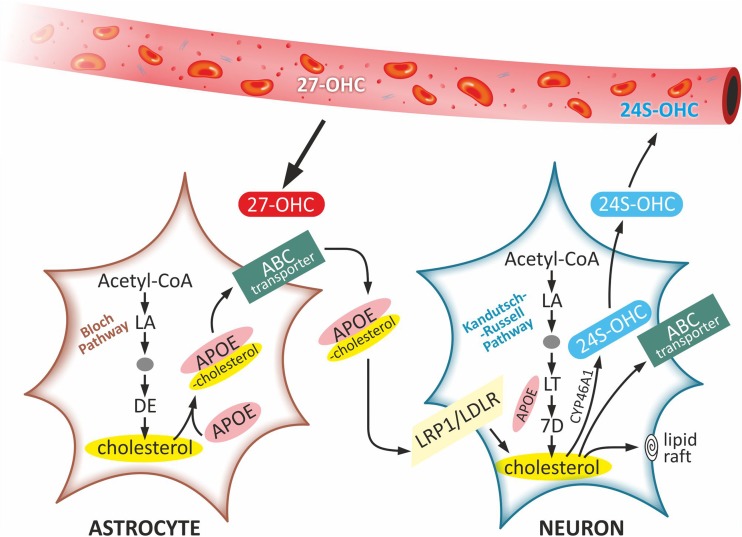Fig. 2.
Cholesterol synthesis and metabolism in astrocytes and neurons. Cholesterol is biosynthesized in astrocytes via Bloch pathway, while in neurons via Kandutsch-Russell pathway. In both pathways, Acetyl-CoA is converted to LA and definitively transformed to cholesterol, but they differ in level of the cholesterol precursors: while DE is the main precursor in astrocytes, as LA, LT and 7D are present mainly in neurons. Synthesized in astrocytes APOE is secreted in the form of APOE-containing cholesterol by the ABC transporter and absorbed by neurons via the LRP1/LDLR receptors by endocytosis. The excess cholesterol is converted into 24S–OHC by Cyp46A1 in order to excrete it across BBB and BCSFB to the circulation. It can also be released by the ABC transporter or utilized for the formation of new cellular membranes and microdomains as the lipid rafts. Alternatively, small amount of cholesterol can also be taken up as 27-OHC from the circulation into the brain. Abbreviations: 7D 7-dehydrocholesterol, 24S–OHC 24(S)-hydroxycholesterol, 27-OHC 27-hydroxycholesterol, Acetyl-CoA acetyl coenzyme A, APOE apolipoprotein E, ABC transporter ATP-binding cassette transporter, Cyp46A1 cholesterol 24-hydroxylase, DE desmosterol, LA lanosterol, LT lathosterol, LRP1/LDLR receptors low-density lipoprotein receptor-related protein 1/ low-density lipoprotein receptor

